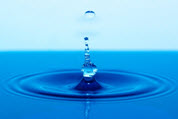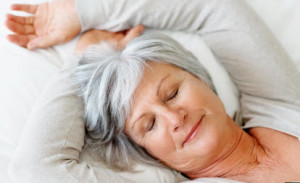Compliments of :
RoseanneMacDonald
Entrepreneur, EliteTransitions
Phone:(807)355-3509
Seniors Tip: Napping-Do’s and Don’ts for Healthy Adults
Joke or Quote of the Month:Keep Moving Forward
Heart Healthy Recipe:Grilled Tortilla and Shrimp Salad
Did You Know? Hearing Challenges
Dehydration-The Body’s Dangerous Drought
 When we look outside and see the rain lashing down, the gutters over-flowing, and grand puddles forming, water conservation is not top of mind. We’re blessed to live in a temperate climate where the kitchen faucet never runs dry. We tend to take water for granted: we have enough, it’s easily accessible, and it’s affordable. Period. But water is essential on another level – for our bodies – and that too is all too often over-looked, especially by seniors. Did you know that, as we age, our ability to detect thirst deteriorates? Or that seniors are much more susceptible to dehydration than those under age 60? Or that an older person is far less able to respond to changes in temperature?
When we look outside and see the rain lashing down, the gutters over-flowing, and grand puddles forming, water conservation is not top of mind. We’re blessed to live in a temperate climate where the kitchen faucet never runs dry. We tend to take water for granted: we have enough, it’s easily accessible, and it’s affordable. Period. But water is essential on another level – for our bodies – and that too is all too often over-looked, especially by seniors. Did you know that, as we age, our ability to detect thirst deteriorates? Or that seniors are much more susceptible to dehydration than those under age 60? Or that an older person is far less able to respond to changes in temperature?
Dehydration is nasty, and it’s made worse because we usually don’t know that it’s happening until we’re so ill hospitalization becomes the only option. That’s why seniors, and their caregivers and families especially, need to know what to look out for. Of course, it can be caused by an inadequate intake of water.
But there are many other reasons too, including diuretic medications, diarrhea, diabetes, excess sweating and blood loss. As well, the body loses water as we age when the body’s muscle mass declines, because muscle cells hold more water than almost any other type of cells in the body. Sweating is the body’s natural way to release excess heat and some toxins, and it does so by releasing water through the skin, which then evaporates. But that ability to sweat is hindered when the humidity is high. On such days, we retain the nasty toxins and our core body temperature stays high. But when we drink additional water, it leads us to urinate more often, so the toxins are excreted and the body’s core temperature decreases.
Complications of dehydration, from mild to severe, include:
- heat-cramps, heat-exhaustion and heat-stroke;
- imbalance of electrolytes, which leads to the brain and muscles receiving erroneous messages;
- drop in blood volume, which causes decreases in blood pressure and blood oxygen, which in turn can affect cognition;
- kidney malfunction, since the kidneys need water to help remove the toxins from the blood;
- swelling of the brain, as the brain cells desperately try to retain water and then burst; and finally,
- coma.
So what should we be looking out for? It starts with a dry mouth and dark, concentrated urine, often alongside headaches, cramping and muscle weakness. Then you may see dry, sunken eyes, wrinkled and inelastic skin, a rapid but weak pulse and breathing faster than normal. Unless hospitalized quickly, you may also see severe cramps, delirium, convulsions, coma and death. Severe dehydration requires immediate medical attention, but mild dehydration can quickly be offset by drinking water. If the person is in a hot, humid environment, move them to a drier, cooler area, so they can begin to sweat naturally. Exertion should be minimized. Of course, the key is not to get dehydrated in the first place. Encourage your loved one to check their pee – it should be almost clear or very pale yellow. And tell them not to wait until they are thirsty before drinking water – by then they already may be mildly dehydrated. Drink five 8-ounce glasses of water every day. Note that beer, pop, cola and coffee do not count as water (caffeine and alcohol are diuretics), but soda water, sports drinks and green tea are good water-equivalents. Water truly is essential for life on so many levels. If only dehydration were as easy to detect as turning on a faucet.
Article by Alex Handyside, CPCA
Heart Healthy Recipe: Grilled Tortilla and Shrimp Salad
This simple yet elegant salad is perfect to enjoy on the deck with friends and family. Grill the tortilla gently to crisp it up to add flavour and texture. Look for large shrimp to put right on the grill, but if they are smaller simply use a grill basket to make sure no shrimps get left behind. Makes 4 cups.
Ingredients
- 1 bag (454 g) frozen jumbo shrimp, thawed, peeled and deveined
- 2 tsp (10 mL) smoked paprika
- 1 tsp (5 mL) canola oil
- 1 clove garlic, minced
- 4 small whole wheat or corn tortillas
- 2 tbsp (25 mL) chopped fresh cilantro
- 1 tbsp (15 mL) lemon juice
- 5 cups (1.25 L) mixed spring greens
- 2 tbsp (25 mL) sherry vinegar
- Pinch fresh ground pepper
- 1 cup (250 mL) halved grape tomatoes
Directions- In a bowl, toss shrimp with paprika, oil and pepper. Place on oiled grill over medium high heat, turning once for about 4 minutes or until firm and pink. Remove to a clean bowl and toss with cilantro and lemon juice. Place tortillas on grill and toast on both sides. Place one on each dinner plate. In another bowl, toss greens with vinegar and pepper. Top each tortilla with greens and sprinkle with tomatoes. Top with grilled shrimp to serve.
Nutritional Information Per Serving (1 cup / 250mL)-Calories 228, Protein 24 g, Total Fat 5 g, Saturated Fat 1 g, Cholesterol 180 mg, Carbohydrates 21 g, Fibre 4 g, Sugar 2 g, Sodium 419 mg, Potassium 594 mg.
Recipe developed by Emily Richards, PH Ec. ©Heart and Stroke Foundation. Reprinted with Permission from the Heart and Stroke Foundation.
Seniors Tip: Napping-Do’s and Don’ts for Healthy Adults
If you’re sleep deprived or just looking for a way to relax, you might be thinking about taking a nap. Napping at the wrong time of day or for too long can backfire, though. Understand how to get the most out of a nap and find out what the benefits are of napping? Napping offers various benefits for healthy adults, including:
- Relaxation
- Reduced fatigue
- Increased alertness
- Improved mood
- Improved performance, including quicker reaction time, better memory, less confusion, and fewer accidents and mistakes
What are the drawbacks to napping? Napping isn’t for everyone. Some people have trouble sleeping in places other than their own beds, while others simply can’t sleep during the day. Napping can also have negative effects, such as:
- Sleep inertia. You might feel groggy and disoriented after waking up from a nap.
- Night-time sleep problems. Short naps generally don’t affect nighttime sleep quality for most people. However, if you experience insomnia or poor sleep quality at night, napping might worsen these problems. Long naps might interfere with nighttime sleep.
What’s the best way to take a nap?
To get the most out of a nap, follow these simple tips:
- Keep naps short. Aim to nap for only 10 to 30 minutes. The longer you nap, the more likely you are to feel groggy afterward.
- Take naps in the afternoon. The best time for a nap is usually mid afternoon, around 2 or 3 p.m. This is the time of day when you might experience post-lunch sleepiness or a lower level of alertness. In addition, naps taken during this time are less likely to interfere with nighttime sleep. Keep in mind, however, that individual factors — such as your need for sleep and your sleeping schedule — also can play a role in determining the best time of day to nap.
- Create a restful environment. Nap in a quiet, dark place with a comfortable room temperature and few distractions.
After napping, be sure to give yourself time to wake up before resuming activities — particularly those that require a quick or sharp response.
Article by Mayo Clinic Staff. Reprinted with Permission from Living Assistance Services, www.laservices.ca
Did you know? Hearing Challenges
 What most people don’t know is that hearing impaired people are often mistaken for being stand offish or rude. What they don’t understand is that these folks often depend on face to face communication or lip reading to be able to hold a conversation.
What most people don’t know is that hearing impaired people are often mistaken for being stand offish or rude. What they don’t understand is that these folks often depend on face to face communication or lip reading to be able to hold a conversation.
Recently a friend of mine was mistaken for being stand offish. I was told she didn’t communicate with others nor did she respond to ‘good morning’ by others in her group as she passed by. She didn’t hear when important things around her were going on and didn’t immediately respond in the way they thought she should have. What I explained was that hearing impaired people are often misunderstood in this way. They don’t hear, so don’t respond. Time and time again, if you communicate with them without first getting their attention, ie a gentle touch, or facing them to speak, it will seem they are ignoring you. “But she wears hearing aids’ was the response I received. Yes, however in a large setting such as a class, with a lot of background noise, hearing properly is even worse and the need to make face to face contact is even greater. Try not to misunderstand the hearing impaired. It is one impairment that causes our older adults the most depression as it isolates them from their social groups and ultimately keeps them from attending their usual programs due to their loss of hearing, being misunderstood and not being able to hold proper conversations.
Article by Johanna Booy, www.seniorcareandfitness.com
Joke or Quote of the Month: Keep Moving Forward
“You have to come to closed doors before you get to open doors. What if you knew you had to go through 32 closed doors before you got to an open door? Then you’d come to closed door number 8 and think, ‘Great, I got another one out of the way!’ Keep moving forward!”
Joel Osteen

